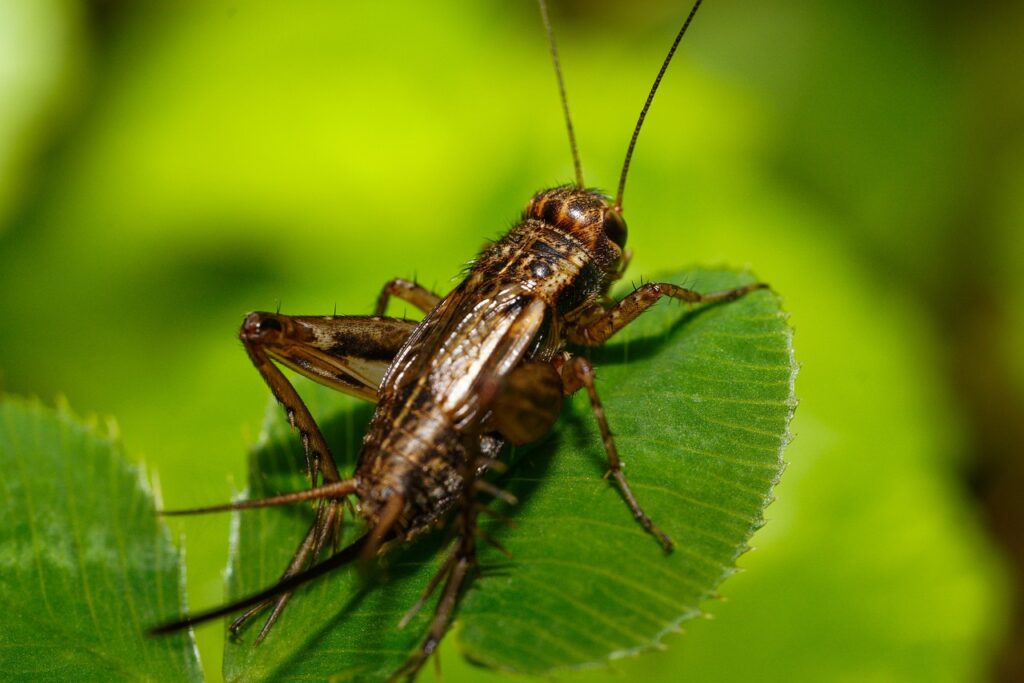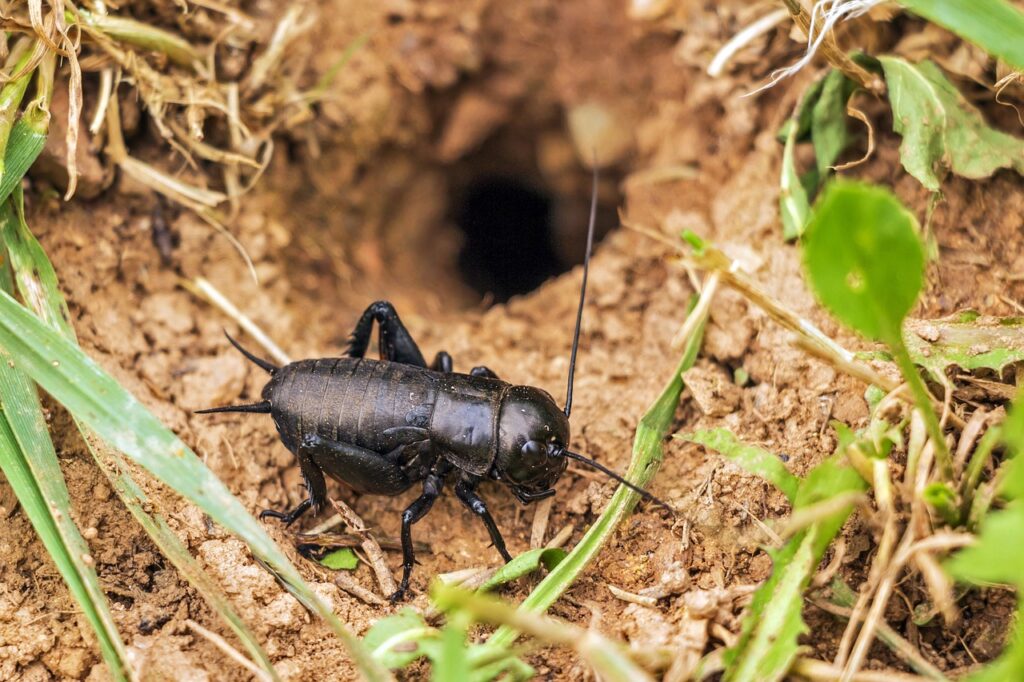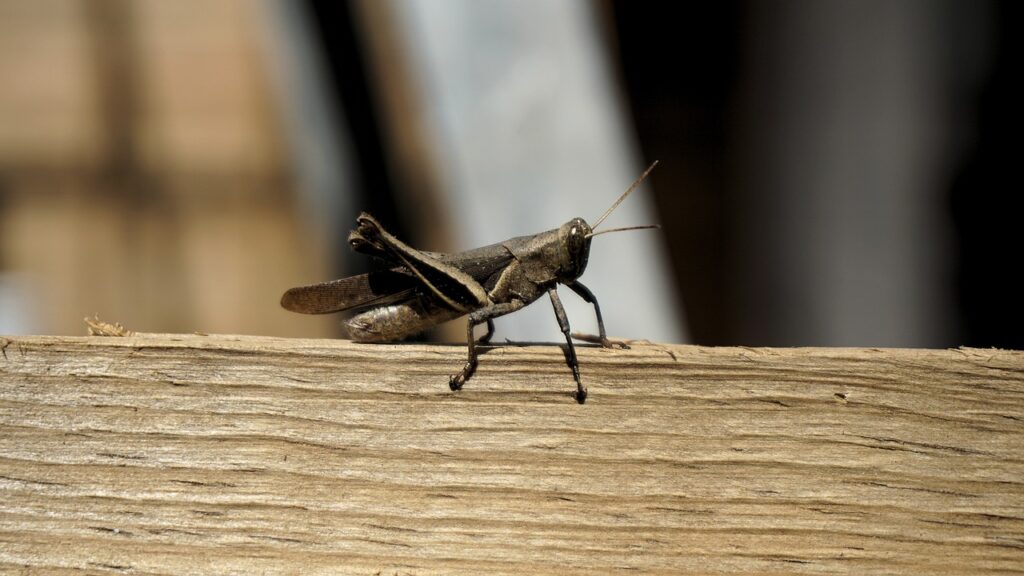How to Get Rid of Crickets: The Ultimate Guide

For many homeowners in Pennsylvania, the arrival of crickets signals the start of an annual struggle. These chirping intruders can quickly become a nuisance, disrupting the peace of your home. But beyond the annoyance, crickets can cause real damage to fabrics, plants, and other items around your house. Understanding how to get rid of crickets — whether they’re in the house or outside — is essential to maintaining a harmonious and pest-free living space.
We’ll explore the various types of crickets found in our area – specifically in Lancaster, York, Berks, Cumberland, Lebanon, Chester, and Perry counties — the signs of a cricket infestation, and effective methods for preventing and eliminating these unwanted guests.
The First Step in Cricket Control: Identification
To effectively manage a cricket infestation, it’s helpful to first identify the type of cricket that is infiltrating your home or garden. Here are some common types found in Lancaster and York counties:
House Crickets
House crickets are among the most common varieties that homeowners encounter. Recognizable by their small size and light brown color, these pests are infamous for their loud chirping. Despite their name, house crickets typically live outside much of the year. However, they often seek shelter indoors as the weather grows colder. Once inside, they can wreak havoc on fabrics and upholstered furniture.
To spot a house cricket infestation, listen for their distinctive chirping in the evening. You may also notice damage to clothing and furniture, as these crickets feed on natural fibers.
Field Crickets
Field crickets are larger and darker than their house cricket counterparts. They typically reside outdoors, thriving in tall grass and garden areas. Like house crickets, field crickets may venture inside as temperatures drop or if they’re seeking food or moisture. Their presence is often signaled by a chorus of chirps emanating from your yard.
While field crickets primarily cause issues outside, their migration indoors can lead to similar problems as house crickets. Their feeding habits extend beyond fabrics, affecting paper products and even plants.

Camel Crickets (i.e. Cave Crickets or Spider Crickets)
Known by several names, camel crickets — also known as cave crickets or spider crickets — are distinguished by their humped backs and long legs. Unlike their chirping relatives, these crickets are silent, making their presence less obvious. They prefer dark, damp environments such as basements and crawl spaces.
Camel crickets can cause significant damage by feeding on organic materials like wood and cardboard. They are usually visible at night, although their presence may also be indicated by chewed materials. Addressing moisture issues in your home is key to controlling these crickets.
Mole Crickets
Mole crickets are characterized by their robust bodies, large forelimbs, and a dark brown to black coloration — giving them a somewhat bulky appearance compared to other cricket types.
Their unique burrowing behavior can cause extensive damage to lawns and gardens. While less likely to invade homes, their impact on outdoor spaces can be severe. Mole crickets thrive in sandy soil, which is why they are often found in golf courses and gardens.
Identifying mole cricket activity involves looking for disturbed soil and plant damage. Their tunneling can disrupt root systems, leading to wilting and dead patches on your lawn.
Recognizing a Cricket Infestation
Cricket infestations often go unnoticed until they become a major problem. Knowing the signs can help you act swiftly to prevent serious damage.
One of the most obvious indications is the persistent chirping of male crickets in the evening and at night. This noise can disrupt sleep and create an unwelcome atmosphere in your home.
Also look for feeding damage – in particular, irregular holes and shredded edges on fabrics, paper products, and plants.
Visual sightings of crickets and their droppings are not uncommon — especially in areas prone to moisture or warmth. Regular inspections of basements, attics, and garages can help you catch these pests early on.
How to Keep Crickets Away: Prevention Techniques
Prevention is always better than treating crickets after they become a problem. Read on to see how you can keep crickets away from your home and garden:
Sealing Entry Points
Start by inspecting your home for potential entry points. Crickets can squeeze through tiny gaps around windows, doors, and utility lines. Seal these openings with caulk or weatherstripping to prevent them from entering.
Reducing Outdoor Attractants
Crickets are attracted to overgrown vegetation and piles of debris. Keep your yard tidy by trimming grass and removing leaf litter. This reduces their breeding grounds and makes your property less inviting.
Outdoor lighting also can attract crickets and other bugs, so consider using motion-activated lights.
Addressing Moisture Issues
Since many crickets thrive in damp environments, addressing moisture problems in and around your home is crucial. Fix leaky pipes, use dehumidifiers, and ensure proper ventilation in crawl spaces.
Decluttering
Crickets often hide in cluttered areas. By reducing clutter in basements, garages, and storage spaces, you limit their hiding spots and make your home less appealing. Keeping your gutter free of leaves can also help to keep these pests away.
How to Get Rid of Crickets through DIY Methods
Despite your best efforts, crickets may still find a way into your home. Here are some do-it-yourself techniques that are effective in either trapping or killing crickets:
Traps and Baits
Sticky traps and bait stations are effective tools for capturing crickets. Place them strategically in areas where you suspect cricket activity. When tackling outdoor cricket populations, position these devices around sheds, wood piles, and compost areas.
Vacuuming
A vacuum cleaner can be an effective tool for reducing the number of crickets in your home. Use it to suck up visible crickets and remove any eggs. Be sure to empty the vacuum outside, immediately after use.
Insecticides
If crickets persist, consider using an insecticide containing pyrethroids. Follow the instructions on how to kill the crickets without harming yourself or family members. Carefully apply to cracks, crevices, and other potential hiding spots.
To get rid of crickets outdoors, spray around your basements, garage, pipes, and vents. Granular insecticides and lawn treatment sprays are especially effective at the beginning of summer to eliminate the remaining population.
Note: While pesticides can act quickly, crickets often take several hours or even a day or two to die.

Natural Solutions for Cricket Control
There are several methods to get rid of crickets both inside and outside the house naturally:
Diatomaceous Earth
Diatomaceous earth is a natural powder that can be used to deter crickets. Sprinkle it around baseboards, crevices, and in other areas where crickets are likely to enter or hide. The powder is abrasive to crickets, causing them to dehydrate and die.
Essential Oils
Essential oils like peppermint and cedarwood have natural insect-repellent properties. Create a spray by diluting the oils in water and applying it to surfaces where crickets are active.
Homemade Traps
Create simple homemade traps using containers filled with a mixture of molasses and water. The sweet scent attracts crickets — and once inside, they become trapped and drown.
Detergent and Water
Mole crickets can severely damage lawns, as they often feed on the roots of grass. If you see a disturbance in the soil, simply mix two tablespoons of dish detergent with a gallon of water. Pour this mixture over a two-foot area of your lawn in the morning or evening. This solution will drive the mole crickets to the surface, making them easier to identify and manage.
If you are treating your lawn in the early spring, you can also apply nematodes to prey upon the young crickets and reduce their population before the females lay their eggs.
How to Get Rid of Crickets Long-Term: Call the Pest Control Experts
If your cricket problem persists despite your best efforts, it’s time to call in the experts. Dominion Pest Control Company offers professional solutions tailored to your needs.
With over 100 years of combined experience, our team of “Dominators” combines expertise with a commitment to customer satisfaction. We provide comprehensive inspections, identify the root causes of infestations, and implement targeted treatments for long-lasting results.
Following our initial assessment, we may use the following treatments:
Integrated Pest Management (IPM)
We focus on an Integrated Pest Management strategy, which combines preventive measures and targeted treatments. This includes addressing moisture issues and sealing entry points, along with other treatments as necessary.
Targeted Insecticides
For active infestations, we utilize insecticides that are specifically formulated to target crickets while minimizing risks to humans and pets. These may be applied in cracks, crevices, and other hiding spots where crickets are likely to reside.
At Dominion Pest Control, we are proud to offer natural alternatives like Nature-Cide Granular: an all-natural granular insect control treatment designed to kill crickets and their eggs — whether they’re in your house or outdoors. Formulated with cedarwood oil, cinnamon oil, and other natural ingredients, this product is nontoxic and safe to use around children and pets.
Baiting Systems
We may implement specialized baiting systems that lure crickets in and ensure they consume the active ingredients. This method provides long-lasting results since it targets both adult crickets and their eggs.
Follow-Up Inspections
Once treatments are applied, our team offers follow-up inspections to monitor the situation and ensure that they are working effectively. We also provide ongoing support and advice on maintaining a cricket-free environment.
Contact Dominion Pest Control Today
By following the tips outlined in this guide, you can keep crickets at bay and create a more peaceful environment. But to ensure that your cricket infestation is treated in the safest, most effective way possible, contact our team at Dominion Pest Control. Our professional exterminators have extensive training and many years of experience.
We serve Lancaster County (Lititz, Lancaster city, Manheim, Ephrata, Strasburg, etc.), York County (Dallastown, Red Lion, York city, Hellam, etc.), Berks County, Cumberland County, Lebanon County, Chester County, Perry County, and Hershey, PA. Here’s a map of our location: